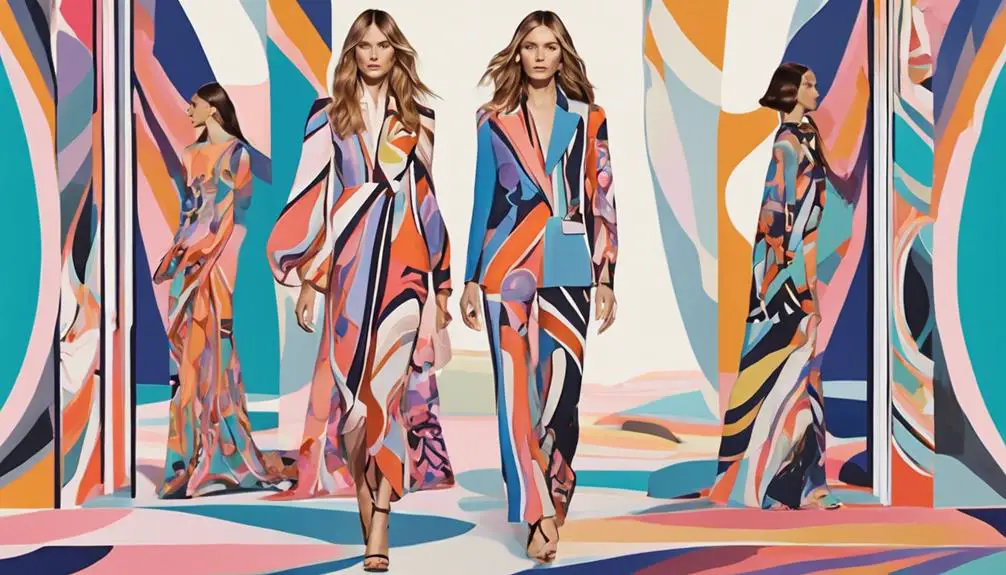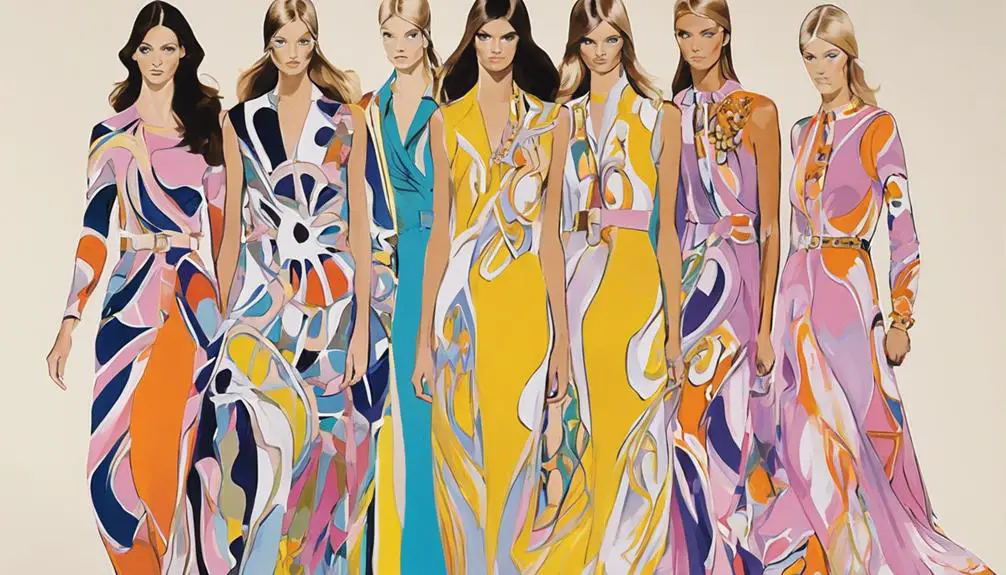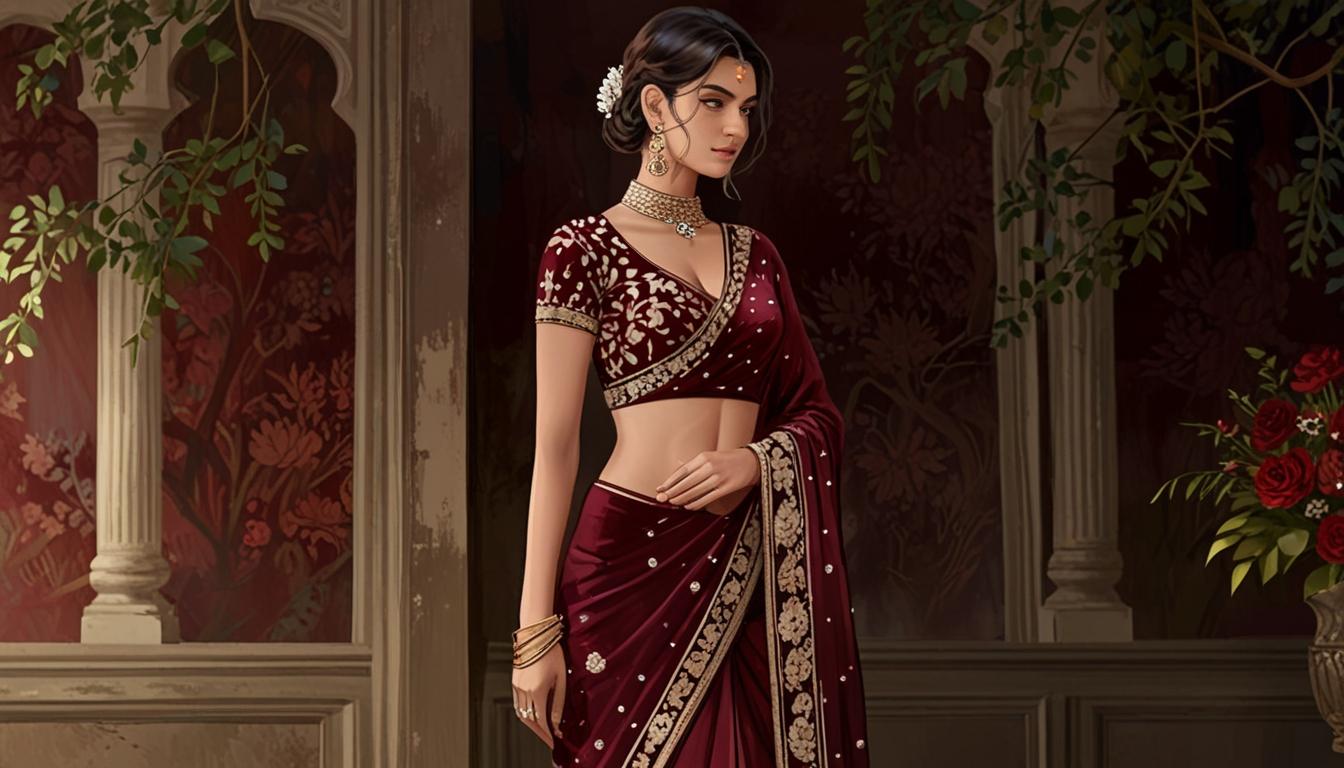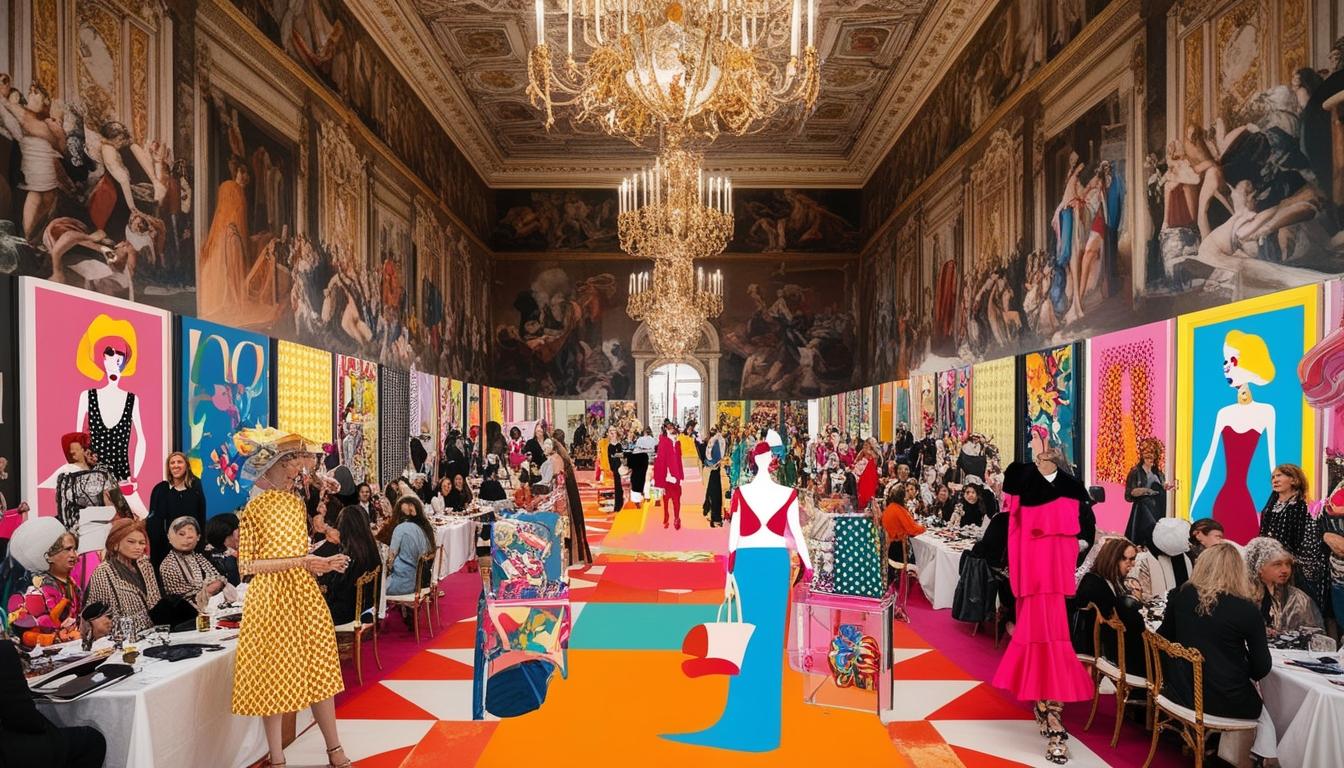You might recall the impact of Jacqueline Kennedy donning Pucci's iconic Capri pants, a moment that not only defined a style but also sparked a fashion revolution. As you explore the evolution of the House of Emilio Pucci, you'll find a tapestry woven with bold colors and innovative designs that continually challenged norms. From vibrant ski suits to celebrity endorsements, the brand has left an indelible mark on fashion history. But what truly sets Pucci apart is the cultural resonance of its creations, leading to a phenomenon that continues to influence contemporary style.
Early Life and Influences

Emilio Pucci's early life set the stage for his vibrant career in fashion. Born to aristocratic parents in Naples on November 20, 1914, his upbringing instilled in him an appreciation for luxury and elegance. These influences shaped his design perspective, which would later become a hallmark of his work. After graduating from Reed College in Oregon with a Master's in Social Science in 1937, he developed a keen understanding of social dynamics that would inform his fashion choices.
Pucci's athletic pursuits also played a pivotal role in his design journey. Competing as a member of the Italian national ski team during the 1936 Berlin Winter Olympics sparked his interest in creating ski uniforms that were not only functional but also stylish. He wanted skiers to look good while enjoying the slopes, and this desire led to the creation of vibrant ski wear that caught the eyes of fashion enthusiasts.
His experiences as a Pilot Lieutenant in the Italian Air Force during WWII further influenced his design philosophy. He embraced the concepts of movement and comfort, which came to define his signature aesthetic. The fusion of these elements resulted in pieces that were both energetic and wearable, appealing to a wide range of consumers. By 1947, when he gained attention for his innovative ski uniforms, he had set the stage for a legendary fashion career, paving the way for a brand that would ultimately become synonymous with vibrant prints and modern luxury.
Breakthrough in Fashion
With the vibrant ski suit that caught the eye of Harper's Bazaar in 1947, Pucci's breakthrough moment in fashion was set in motion. This marked the beginning of Emilio's rise as a leading figure in the industry, capturing the imagination of fashion enthusiasts everywhere. By February 1951, he showcased his first collection during the inaugural Italian fashion show in Florence, solidifying his status in the international fashion arena. His innovative designs, characterized by bold colors and luxurious jersey silk, quickly set him apart.
Emilio's creations, particularly the iconic Capri pants introduced in the early 1950s, catered to a luxurious, active lifestyle, drawing admiration from high-profile clients like Jacqueline Kennedy and Marilyn Monroe. These pieces encapsulated the spirit of the era, allowing women to express their own style while embracing elegance and comfort. Pucci's vibrant prints became synonymous with his fashion house, earning him the moniker "The Prince of Prints."
In recognition of his design excellence, Pucci received the prestigious Neiman Marcus Award in 1954, further cementing his influence on Italian fashion and beyond. His work not only transformed the aesthetics of clothing but also revolutionized how people perceived print and color in fashion. With each collection, Pucci pushed boundaries and redefined fashion norms, leaving an indelible mark on the industry that resonates to this day. As you explore his legacy, you'll appreciate how his breakthrough moments shaped the vibrant world of modern fashion.
Iconic Collaborations and Designs

Pucci's innovative spirit extended beyond clothing, leading to several iconic collaborations and designs that showcased his versatility. As the Marquis Emilio Pucci, he captivated the fashion world with his vibrant colors and bold patterns, earning the title of "The Prince of Prints." This reputation blossomed further when renowned figures such as Marilyn Monroe and Jacqueline Kennedy Onassis donned his creations, elevating the brand's visibility and solidifying its status in popular culture.
In 1971, Pucci collaborated with NASA to design the logo for the Apollo 15 mission, an unexpected yet brilliant fusion of fashion and aerospace that illustrated his creativity. His ability to transcend traditional boundaries didn't stop there. In 1979, he entered the automotive world with a luxury car design for Lincoln, merging fashion aesthetics with sleek automotive design and expanding his brand's reach into new markets.
Additionally, in 1961, Pucci launched his first collection of porcelain tableware, diversifying his brand's offerings and reinforcing its identity in home decor. Each piece echoed his signature style, with the same vibrant colors and bold patterns that defined his fashion collections.
Through these collaborations and designs, Pucci demonstrated that fashion could permeate various aspects of life, creating a lasting impact that continues to inspire. Whether through a chic dress or an elegant dish, the essence of Emilio Pucci lives on, reminding us that creativity knows no limits.
Cultural Impact and Recognition
The vibrant prints and bold designs of Emilio Pucci have left an indelible mark on the fashion landscape, transcending mere clothing to become cultural symbols. The Pucci brand gained widespread recognition when Marilyn Monroe donned one of his solid-colored garments, instantly boosting the brand's visibility and appeal. This moment was just the beginning of Pucci's journey into the spotlight. In the late 1980s, 'Puccimania' took hold, with high-profile figures like Madonna and Linda Evangelista showcasing vintage Pucci designs, solidifying the brand's cultural significance.
Emilio Pucci's influence extended beyond fashion, as he was elected to the Italian Parliament from 1963 to 1972, uniquely blending politics with style. This rare intersection demonstrated his impact on society, proving that fashion could carry weight in the political arena. The brand's recognition continued to flourish, receiving the CFDA award in 1991, which celebrated a resurgence of 60s designs and acknowledged Pucci's lasting impact on the industry.
Additionally, iconic photographs featuring celebrities like Jackie Kennedy in 1962 further propelled the Pucci brand into the international press, creating an undeniable buzz around his creations. The combination of Made in Italy craftsmanship and striking designs captivated audiences, ensuring that Emilio Pucci's legacy would be remembered for generations. Today, his work continues to inspire and influence, embodying a spirit of creativity and cultural resonance that few can match.
Legacy and Brand Evolution

Emilio Pucci's legacy isn't just about his iconic designs; it's also about how the brand evolved over the decades. Founded in 1947, Emilio Pucci quickly garnered international acclaim, particularly for his vibrant ski uniforms that seamlessly fused fashion with functionality. His innovative approach not only impressed fashion enthusiasts but also caught the attention of high-profile clients like Marilyn Monroe and Jacqueline Kennedy, linking the brand to the glitzy world of celebrity culture.
After Pucci's passing in 1992, his daughter, Laudomia Pucci, took the reins, ensuring that the brand's heritage remained intact while adapting to a rapidly changing fashion landscape. Under her guidance, the fashion house continued to flourish, maneuvering new challenges with creativity and resilience. The brand evolution took a significant turn in 2000 when LVMH acquired 67% of the Pucci brand, leading to a revitalization that expanded its global presence through strategic collaborations and innovative collections.
In 2018, the introduction of Palazzo Pucci as a Heritage Hub marked yet another milestone in the brand's narrative. This initiative not only preserved the rich history of Emilio Pucci but also engaged contemporary audiences, blending the past with the present. Today, the legacy of Emilio Pucci continues to inspire new generations, showcasing vibrant designs that celebrate individuality and creativity, while remaining a prominent player in the fashion world.



